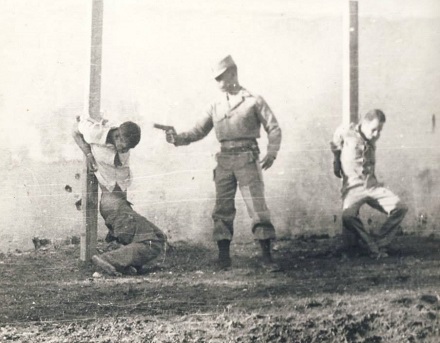Daniel Morel “Document of Disaster”


Daniel Morel, born in 1951 in Haiti, is a Haitian photographer whose impetus for capturing the brutality of catastrophe, arose from his own ruthless encounter with the frame by frame execution photographs of two members of the ‘Jeune Haiti’ (Young Haiti), who were planning the overthrow of ‘Papa Doc’ Duvalier’s dictatorship. While these images were shocking viscerally, they deeply impacted Morel and influenced his desire to be a photographer of devastation, struggle, and catastrophe, to focus on “the Haitian struggle” rather than “the easy things – follow soldiers, ride helicopter, following those international aids”- as he had seen other visiting photographers and journalists do.
More importantly, Morel’s desire to photograph stems from his intimate connection to the island as more than simply just a citizen of Haiti, but as an inhabitant of the island: it is his home, his life, and his root. Despite immigrating to the United States at the tender age of 18, Morel returned to Haiti in 1982 and since then, has spent the last 36 years of his life documenting all aspects of his country, ranging from the people to the history, and to the culture. Despite the vast assortment of themes covered in his work, Morel is most famous for the striking rawness of the photographs he took mere seconds after the 2010 earthquake in Haiti. These photographs are alarmingly raw because of they were taken only moments after the earthquake. In an interview with New York Times, Morrel describes the very moments after this disaster. He sees destruction, horror, black bodies filling the streets in a matter of minutes.

Regardless of his terrifying proximity to this catastrophe, to the horrific sight of black bodies mutilated and strewn across roads like filthy rags, and to the varying painful emotions he was probably experiencing at seeing his island, his people enveloped in death, in violence and chaos, Morel, decides to remain in this demonic ground and document the encompassing barbarism of the earthquake. He frequently embodies the omnipresent position of death as he stands at the threshold of the visible, life, and the invisible, death. Morel documents the visible life of the island through photographs of culture, people, and etc. What makes Morel a truly revolutionary photographer is his power to transcend the boundaries of the visible and the invisible, of life and of death, by being at the scene moments after such disaster. Typically, such an intimate account of disaster is not frequently captured, especially of black bodies, because of the unwillingness of many photographers to be in the domain of the demonic ground, a space writhed with horror and violence, but Morel transcends those fears and willingly embodies this position of cruelty to capture images of the brokenness, the brutality, and the unending fickleness of catastrophe. His photographs are truly powerful because they give insight into positions of death that would not have been exposed if Morel did not persistently embody the figure of death and stand at the threshold of this enveloping violence. Morel, knowing the dangers of standing in the crux of violence, asserts that, “I always take the last shot. It might be my last shot. No last word, the last shot. That’s how I want to go.”

Morel is willing to sacrifice his life to document for the next generation. Morel wants the next generation to have a firsthand account, from a fellow Haitian, of the catastrophic history of Haiti. By capturing the earthquake and its aftermath, Morel is rebelling against intuitions that release statistics regarding the amount of aid being poured into Haiti. Through this photographic documentation of the condition of Haiti, the absence of these same institutions that claim to be working steadfastly for the recovery of Haiti are revealed. The absence of these organizations in Morel’s photos solidifies the hypocrisy, the criminality, and the ways in which those institutions continue to reproduce violence by unfulfilled promises of aid. Morel’s photographs are a retelling of the history because it documents not only the violence inflicted upon the people by nature, but it also serves as an exposition of those institutions of power that erase traces of their violence on the land.
Work Cited
https://lens.blogs.nytimes.com/2010/01/27/showcase-117/?_r=0
“Daniel Morel (2011 Photo Contest)” from World Press Photo on Vimeo: https://vimeo.com/67517709
https://www.thestar.com/news/world/2014/02/24/haitis_rubblerouser_the_4year_fight_for_earthquake_justice.html